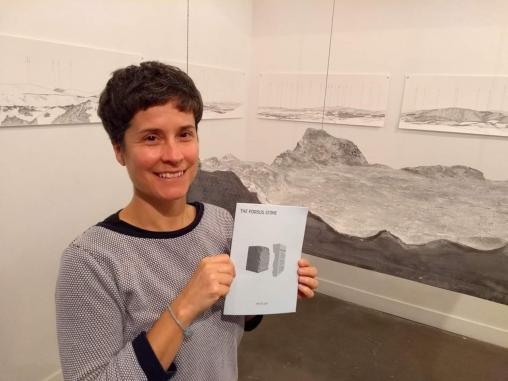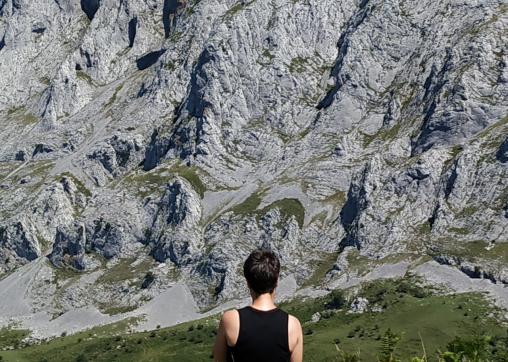The Porous Stone
Iratxe has been commissioned by eremuak to write the long-form essay "The porous stone", in which she reflects on the agency of the object in relation to our artistic practice, taking as a reference our work on the reproduction of an abandoned memorial stone dedicated to three Nazi soldier who died in the Spanish Civil War.
The cahier will be presented in Bilbao on october 17 2019, during the Eremuak Sessions 2019: 'Naturaleza/s' at Azkuna Zentroa.
Read an excerpt from the introduction below:
A car slows down and pulls up by us. We will have to wait for a few slightly uncomfortable seconds longer as the window is wound down. The driver leans his body with difficulty over the passenger seat, wanting to get a good look at us. Finally he says, “Kaixo, what are you doing?” The question is not intended to be hostile – it seems to come from a genuine curiosity, although the two occupants of the car are smiling securely, a bit like players with a good hand of cards. We will soon find out they’re the owners of the land on which stands the object we are tampering with.
At the point when the car pulls up, the object is completely covered with a sticky green paste. That, of course, is why they’ve stopped. Why are we on their land? What is that green stuff? It is all part of an art work I am realising in collaboration with my my art partner, Klaas van Gorkum. If all goes well, once it’s dry we should be able to detach it from the original object and be left with a silicon mould with which we can make an exact replica of it.
The occupants of the car have been wanting to get rid of this object for a long time. They consider our position. Why would we want to make a copy of something they can’t stand the sight of? Do we blame them in some way for having left it out there to deteriorate? They seem satisfied by our explanations, and start to tell us all kinds of stories.
The thing in question is a monolith, and is part of the remnants of a monument in Urbina (Álava), dedicated to three German soldiers, and known to locals as the “Alemanen kanposantue”, the German Graveyard. Erected around eighty years ago, during or shortly after the Civil War, it must have stood over a small garden of about ten square metres surrounded by a wall.
There’s nothing left now apart from this stone block, and very little can be perceived of its original function as a memorial. Some months ago, the names of the soldiers carved onto its surface were still visible. But someone has chiselled away the letters. All you can see now is a peculiar patchwork of bright scratches produced by a sharp tool on the limestone, against a background with traces of red paint.
We’re interested in how the stone absorbs what happens around it from the moment it was placed here until the day it disappears; as if its apparently indecipherable surface were an exact record of the events it has presided.
I will return to this object many times in this text. I will be dissecting the different layers that recent history has deposited onto its surface, and, most of all, I intend to use it as an anchor for some of the theoretical coordinates of our practice as artists. The monolith is thus the object of this study. But I will approach it with none of the scientific rigour of, say, an archaeologist. In historical terms, this account will be unreliable. I wish this text to be seen as part of a performative exercise of appropriating the object.
I am writing this during the production of our current project, which is a work in progress. The text can therefore not function as a description of something already finished. Nor is it a declaration of intentions prior to giving shape to an idea. It is, strictly speaking, situated halfway through the translation of the object into my terrain, which is contemporary art.








